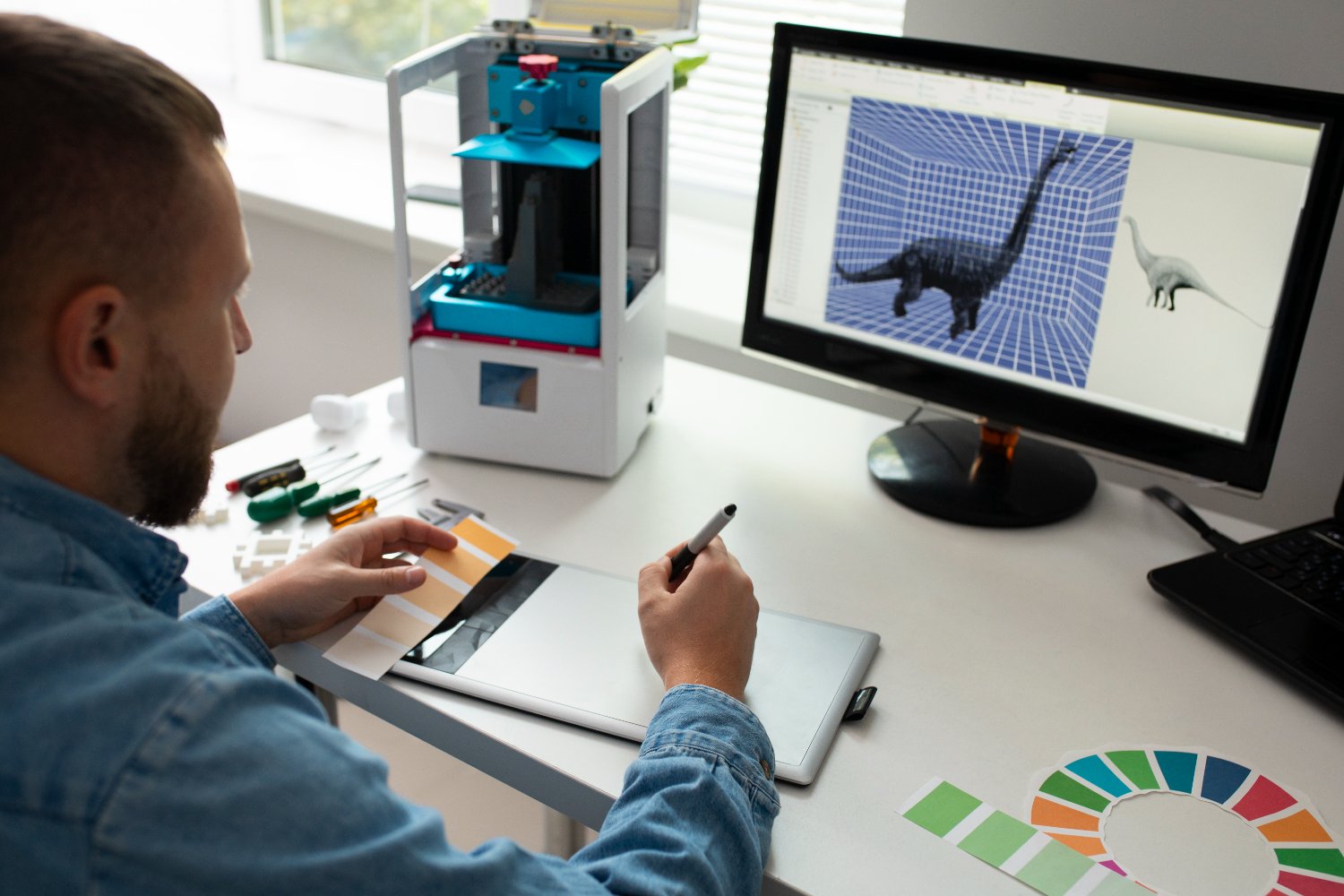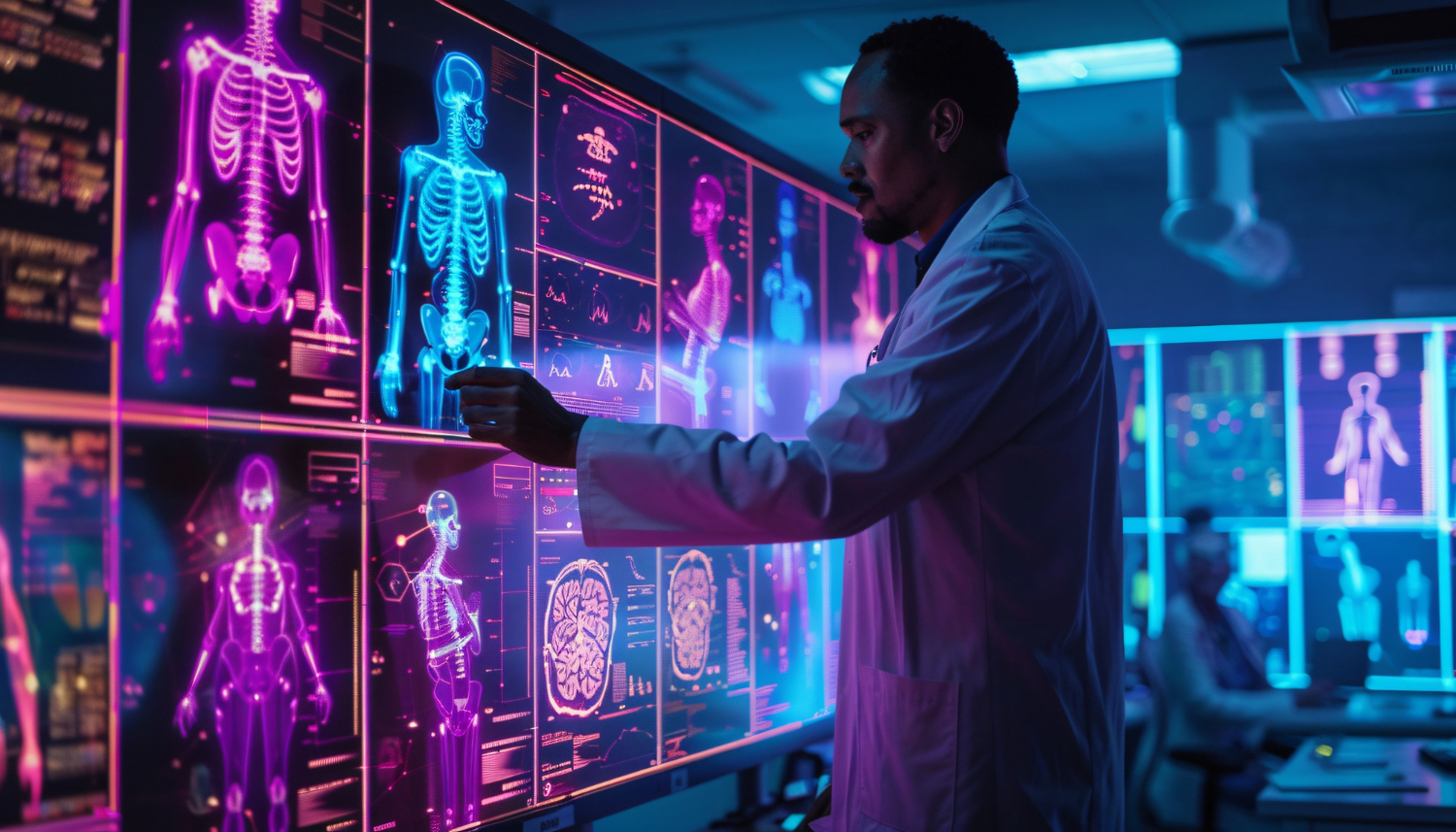3D Modelling with Augmented Reality Technology
3D modelling and augmented reality (AR) are changing how we interact with the world. This blend of technology allows users to create virtual models that integrate with their physical surroundings. From gaming to design, augmented reality experiences are becoming part of everyday life.
AR technology overlays computer-generated images onto real-world environments. By using a mobile device or AR glasses, users can view these virtual models in real time. This interaction makes 3D modelling more immersive and accessible than ever.
What is Augmented Reality for 3D Modelling?
Augmented reality AR combines the digital world with the physical world. It enables users to view and manipulate 3D models in a real-world environment. For instance, designers can use an AR-enabled app to place furniture in a room. They can then see how it fits in real life before making a purchase.
This technology works through devices like smartphones, tablets, and head-mounted displays. Phone cameras capture the real-world environment. Then, AR platforms overlay computer-generated images onto the scene. This creates a seamless blend of the virtual and physical.
How AR Apps Improve 3D Modelling
AR apps have made 3D modelling more accessible. With a mobile device, users can interact with 3D models from anywhere. This means architects, designers, and gamers can bring their ideas to life without needing expensive tools.
For example, in the gaming industry, AR technology is used to create interactive environments. Players can bring video games into their living rooms. Similarly, social media platforms are integrating AR-enabled features. Users can apply filters, create avatars, or design virtual spaces with ease.
AR platforms also help improve workflows. By visualising 3D models in a real-world environment, designers can make quicker decisions. Whether it’s adjusting a design or testing an idea, augmented reality speeds up the process.
Industries Benefiting from AR and 3D Modelling
Architecture and Design
Architects use augmented reality experiences to present their ideas. Clients can view 3D models of buildings in the real world environment. This improves communication and ensures everyone is on the same page.
Designers also benefit from AR apps. They can use phone cameras to visualise products in real life settings. For instance, an interior designer might use AR to place furniture in a room.
Gaming
The gaming industry has embraced AR technology fully. With AR-enabled features, games interact with the player’s physical world. Think of mobile games where virtual objects appear on the streets around you.
This interaction bridges the gap between the virtual reality VR space and the real world. It makes gaming more engaging and enjoyable.
Read more: Level Up Your Gaming Experience with AI and AR/VR
Sports and Entertainment
AR technology is also enhancing sports experiences. Football games, for example, use augmented reality to display real-time stats. Fans can view 3D overlays during matches, improving their understanding of the game.
In entertainment, AR is being used to create interactive performances. Artists can blend virtual elements with live shows, offering a unique experience.
Read more: Augmented Reality (AR) in Sports: Changing the Game
Education and Training
AR platforms are transforming education. Augmented reality helps students visualise concepts in 3D. For example, a biology student can view a 3D model of the human body.
Training programmes also use AR to simulate real-life situations. This is common in industries like healthcare and aviation.
Read more: VR for Education: Transforming Learning Experiences
Key Features of Augmented Reality for 3D Modelling
Real-Time Interaction
One major feature of augmented reality AR is its ability to operate in real time. Users can interact with 3D models as if they were part of the physical world. This feature is crucial for industries like architecture and gaming.
Accessibility on Mobile Devices
AR-enabled apps work on smartphones and tablets. This makes 3D modelling accessible to a wider audience. Users don’t need specialised equipment to interact with AR models.
Integration with Phone Cameras
AR technology relies heavily on phone cameras. These cameras capture the real-world environment, allowing AR platforms to overlay computer-generated images. This integration makes the experience seamless.
Use of AR Glasses and Head-Mounted Displays
For a more immersive experience, users can opt for AR glasses or a head-mounted display. These devices allow for hands-free interaction with augmented reality experiences.
Read more: Futuristic AR and VR Technology: Immersive Future
The Difference Between AR and VR
While augmented reality and virtual reality are often mentioned together, they are different. Augmented reality overlays virtual elements onto the physical world. Virtual reality creates a completely computer-generated environment.
For example, AR apps might place a 3D model on your desk. VR apps, on the other hand, transport you to a virtual space like a video game level. Both have unique applications, but AR offers more integration with the real world environment.
Challenges in 3D Modelling with AR
Amount of Data
3D modelling and AR technology require processing a large amount of data. High-quality computer-generated images and videos take up significant resources.
Device Compatibility
Not all mobile devices are AR-enabled. Older smartphones and tablets might struggle to run advanced AR apps. This limits access for some users.
Calibration Issues
AR platforms rely on accurate calibration to blend virtual models with the physical world. Poor calibration can result in a less seamless experience.
Future Trends in Augmented Reality and 3D Modelling
As AR technology advances, we can expect more integration with everyday devices. AR glasses are becoming more affordable, making augmented reality experiences more immersive.
AR-enabled apps will also become smarter. Machine learning and AI are likely to improve how AR platforms process images and videos. This will make the technology more efficient and user-friendly.
Industries like gaming, education, and healthcare will continue to adopt AR for 3D modelling. From designing buildings to simulating surgeries, the applications are endless.
Enhancing 3D Modelling Through AR Platforms
Augmented reality platforms have introduced a new way to approach 3D modelling. Designers, developers, and businesses are leveraging these technologies to enhance creativity and problem-solving. By integrating AR technology into 3D modelling workflows, users can better connect digital assets to the real-world environment, creating more dynamic and meaningful interactions.
Dynamic Integration with AR-Enabled Tools
Augmented reality tools enable seamless interaction between 3D models and the physical world. Designers can visualise their work in real time using AR-enabled smartphones and tablets. This capability allows them to test ideas and make improvements more effectively. For instance, a furniture manufacturer can use an AR app to show customers how a product will look in their homes before purchasing.
AR platforms also provide integration with head-mounted displays, offering hands-free functionality. This creates a more immersive experience, enabling users to manipulate 3D models with greater precision. These tools are especially beneficial for industries like automotive design and real estate, where real-life visualisation is essential.
Bridging Physical and Digital Worlds
AR technology bridges the gap between the physical world and digital content. Through the use of AR glasses or mobile devices, users can overlay computer-generated images onto their surroundings. This blending of the real world with virtual elements transforms static 3D models into interactive experiences. For instance, architects can superimpose building designs onto a construction site, ensuring their vision aligns with the actual environment.
The ability to toggle between digital and physical perspectives enhances productivity. Teams working on collaborative projects can share AR-enabled designs and make adjustments based on feedback. This approach improves communication and reduces costly errors.
Applications of 3D Modelling with AR Technology
The versatility of augmented reality in 3D modelling has made it a valuable asset across various industries. From entertainment to healthcare, the use of AR technology is driving innovation and improving outcomes.
Gaming and Entertainment
In the gaming industry, AR technology has revolutionised how players interact with their environment. Video games now use augmented reality to create realistic settings that integrate with the player’s surroundings. For instance, mobile games with AR features can place characters and objects directly into the physical world.
Additionally, AR is enhancing live performances and virtual events. By combining 3D modelling with augmented reality experiences, performers can incorporate virtual elements into their shows, captivating audiences in new and exciting ways.
Healthcare
The healthcare sector is another area where AR platforms are making a significant impact. Surgeons and medical professionals can use augmented reality experiences to visualise complex procedures. For example, 3D models of organs or tissues can be projected onto a patient’s body, offering detailed guidance during operations.
AR apps are also being used for medical training. Students can interact with 3D models of anatomical structures, gaining hands-on experience without the need for cadavers. This approach enhances learning and prepares future healthcare professionals for real-life challenges.
Retail and E-Commerce
Retailers are using augmented reality technology to improve the shopping experience. AR-enabled apps allow customers to try on clothes, test makeup, or visualise furniture in their homes. This interactive approach builds confidence in purchasing decisions and reduces return rates.
E-commerce platforms are integrating augmented reality experiences to showcase products more effectively. By enabling users to interact with 3D models, businesses can provide a richer and more engaging shopping experience.
Education and Training
Augmented reality is transforming education by making complex concepts easier to understand. Teachers can use AR apps to bring subjects like biology, physics, or history to life. For example, students can explore 3D models of ancient artefacts or simulate scientific experiments in real time.
In corporate training, AR technology is being used to create immersive learning environments. Employees can practice skills in a controlled setting, reducing risks and improving retention. Industries like aviation and manufacturing are already benefiting from this approach.
Read more: The Benefits of Augmented Reality (AR) Across Industries
Challenges in Implementing AR for 3D Modelling
While augmented reality offers many advantages, there are challenges that need to be addressed. These include device compatibility, data processing requirements, and user accessibility.
Hardware Limitations
Not all devices are equipped to handle AR technology. Older smartphones and tablets may lack the processing power or sensors needed for advanced AR experiences. This can limit access for users who don’t have the latest hardware.
Head-mounted displays and AR glasses also come with their own set of challenges. These devices can be expensive, making them less accessible for small businesses or individual users. Ensuring compatibility across a wide range of devices remains a key focus for AR developers.
Data Processing Demands
3D modelling and augmented reality require significant computing resources. Rendering computer-generated images and videos in real time involves processing a large amount of data. This can strain devices and lead to performance issues, especially for complex models.
Cloud-based AR platforms are helping to address this issue by offloading data processing to external servers. However, reliable internet connectivity is essential for these solutions to work effectively. In areas with limited connectivity, this can be a barrier.
User Accessibility
Creating accessible AR experiences requires thoughtful design. Interfaces need to be intuitive and easy to use, even for those unfamiliar with augmented reality. Developers must also consider factors like language, cultural differences, and varying levels of technological literacy.
Read more: Augmented Reality (AR) Problems and Challenges
How AR is Shaping the Future of 3D Modelling
The future of 3D modelling with augmented reality looks promising. Advances in AR technology are making it more accessible and efficient, opening up new possibilities for innovation.
Real-Time Collaboration
AR-enabled tools are facilitating real-time collaboration across teams. Designers, engineers, and clients can work together on 3D models, even from different locations. This approach improves communication and accelerates decision-making processes.
For example, a construction team can use AR glasses to visualise building plans on-site. Remote stakeholders can view the same augmented reality experiences through their mobile devices, providing instant feedback. This collaborative workflow ensures projects stay on track and meet expectations.
Enhanced Visualisation
As AR technology evolves, its visualisation capabilities are becoming more sophisticated. High-resolution computer-generated images and videos create realistic representations of 3D models. This level of detail enhances understanding and improves outcomes in fields like healthcare, design, and manufacturing.
AR platforms are also incorporating features like object detection and facial recognition. These advancements enable more precise interactions with 3D models, further improving their utility.
Integration with AI and Machine Learning
The integration of artificial intelligence (AI) and machine learning with augmented reality is driving significant progress. AI algorithms can analyse data from AR-enabled devices to provide insights and recommendations. For instance, a retail app might suggest products based on a user’s preferences and interactions with 3D models.
Machine learning models are also improving the accuracy of AR experiences. By training on large-scale datasets, these models can better understand and adapt to real-wor
How TechnoLynx Can Help
At TechnoLynx, we specialise in AR-enabled solutions for businesses. Our expertise in 3D modelling and augmented reality can transform your projects. Whether it’s creating AR apps, integrating AR platforms, or designing immersive experiences, we deliver tailored solutions.
We ensure compatibility across smartphones, tablets, and AR glasses. Our team helps you bring your ideas into the real world environment with innovative AR technology. Let TechnoLynx make your augmented reality experiences a reality!
Continue reading: How to Create Content Using AI-Generated 3D Models
Image credits: Freepik













